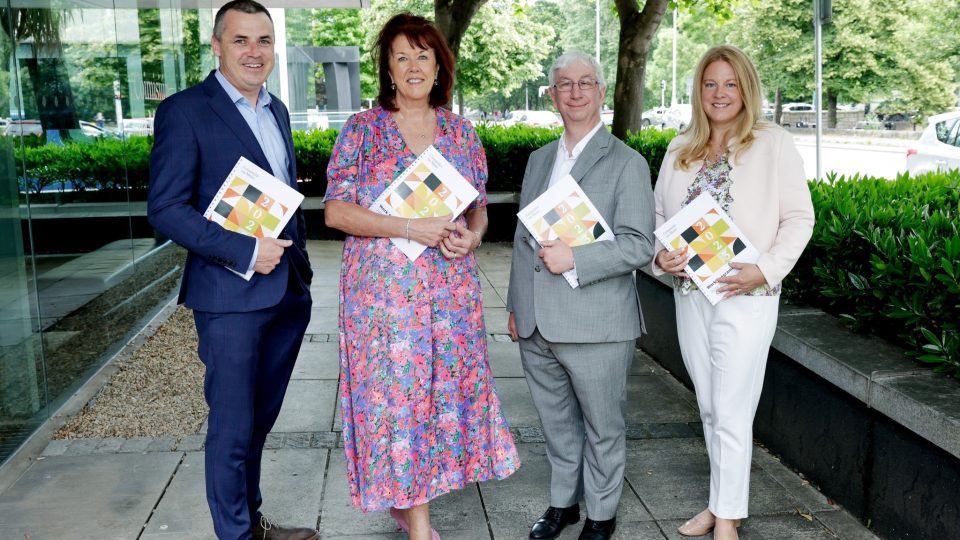KEVIN MYERS: The Mythology of the "Counter Disinformation Strategy"
A recent controversy has erupted in Ireland over a government document titled the "Counter Disinformation Strategy." This document, seemingly aimed at combating the spread of false or misleading information, has instead drawn criticism for its potential implications for free speech and open dialogue. Critics argue that the strategy, while ostensibly targeting harmful disinformation, could easily be misused to stifle legitimate dissent and label inconvenient truths as "disinformation." This has sparked a wider debate about the very nature of truth and the role of government in policing information. The document’s vagueness surrounding key terms like "disinformation" and "misinformation" fuels concern about its potential for overreach. This lack of clarity, coupled with the proposed establishment of a government-backed "counter-disinformation unit," raises the spectre of an official body deciding what constitutes acceptable public discourse. These concerns aren’t merely theoretical. Historical precedents demonstrate how easily such initiatives can morph into tools for censorship and the suppression of dissenting voices. Critics point to instances where governments have invoked national security or public order concerns to silence those who challenge the official narrative. The Irish experience with censorship during the 20th century provides its own cautionary tale.
The "Counter Disinformation Strategy" appears to be predicated on a naive assumption that truth is easily identifiable and that a government body can effectively act as an arbiter of factual accuracy. However, the reality of information dissemination in the digital age is far more complex. Information flows rapidly and organically across multiple platforms, often blurring the lines between fact, opinion, and speculation. Defining and identifying "disinformation" in this dynamic environment is a herculean task, prone to subjectivity and bias. Furthermore, the strategy seems to overlook the crucial role of public debate and critical thinking in countering falsehoods. Open engagement with different perspectives, even those that are ultimately proven wrong, is essential for the robust exchange of ideas and the refinement of our understanding of complex issues. Attempts to suppress or delegitimize certain viewpoints, however well-intentioned, can stifle this vital process and ultimately hinder the pursuit of truth.
The proposed establishment of a government-backed "counter-disinformation unit" raises a host of troubling questions. Who will comprise this unit? What criteria will they use to identify and assess "disinformation"? Will there be adequate oversight and transparency to ensure accountability and prevent abuse? These questions remain unanswered, adding to the unease surrounding the strategy. The lack of clarity regarding the unit’s composition, mandate, and operational procedures creates fertile ground for mistrust. It’s crucial to remember that government agencies, however well-intentioned, are not immune to political influence or bureaucratic inertia. Without strong safeguards and robust transparency mechanisms, such a unit could become a tool for promoting particular narratives or silencing dissenting voices.
Critics argue that the "Counter Disinformation Strategy" implicitly adopts a paternalistic view of the public, assuming that citizens are incapable of discerning truth from falsehood without government intervention. This undermines the very foundation of a democratic society, which rests on the principle of an informed and engaged citizenry capable of making its own judgments. Rather than treating citizens as passive recipients of information in need of protection from "disinformation," the government should focus on empowering individuals with the critical thinking skills necessary to navigate the complex information landscape. Media literacy programs, education initiatives promoting critical analysis, and support for independent fact-checking organizations are far more effective tools for combating misinformation than government-led efforts to police information.
The current controversy surrounding the "Counter Disinformation Strategy" is not simply about the specific content of the document. It reflects a broader and increasingly urgent debate about the relationship between government, information, and the individual in the digital age. As technology continues to reshape the information landscape, the challenges of combating misinformation will undoubtedly grow more complex. However, the answer lies not in empowering government to control the flow of information, but in fostering a culture of critical thinking, promoting media literacy, and strengthening the institutions that support open dialogue and the pursuit of truth. This requires a fundamental shift in mindset, away from a top-down approach to information management and towards a model that empowers individuals to become discerning consumers and responsible producers of information.
Ultimately, the success of any strategy to combat misinformation hinges on the active participation of citizens, not government control. A well-informed and critically engaged citizenry is the best defense against the spread of falsehoods. This requires investing in education, promoting media literacy, and fostering a culture of open dialogue and debate. These are the building blocks of a resilient democracy capable of navigating the complexities of the digital age and safeguarding the principles of free speech and the pursuit of truth. Attempts to control information through government fiat are not only ineffective but ultimately counterproductive, undermining the very foundations of a free and open society. The focus should be on empowering citizens, not controlling information.


